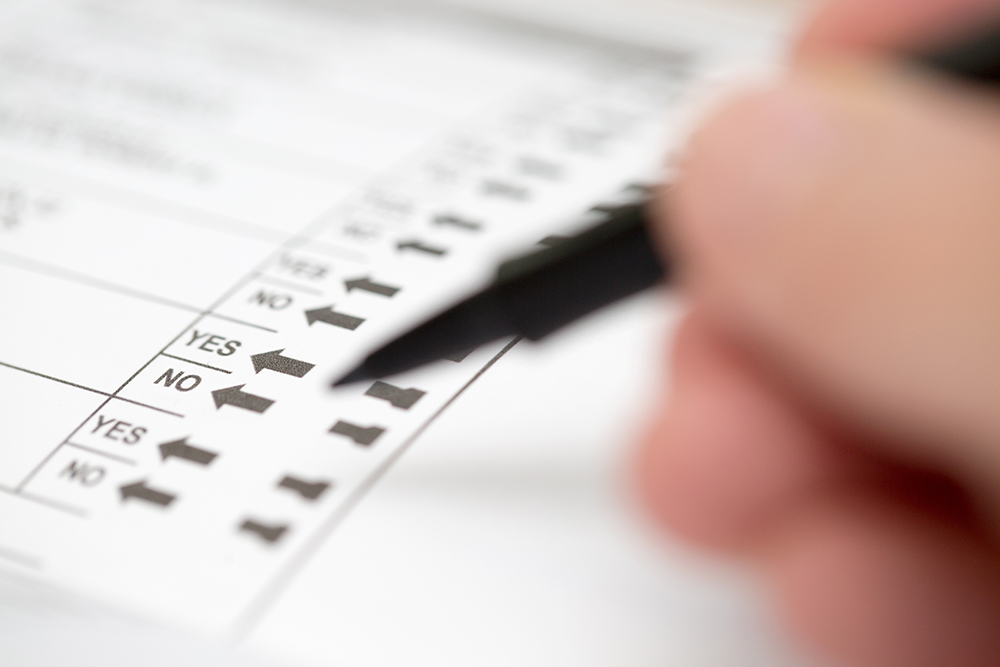5 Things You Should Know About Swing Voters Ahead of the 2018 Midterm Elections
Swing voters determine who wins elections. Most voters choose one party’s candidates almost exclusively throughout large stretches of their lives, but there is also a small group of voters that may vote for either party from race to race and election to election. In competitive districts, where neither party has a majority of such voters, the candidate that appeals most effectively to these swing voters will win the election.
The ability to understand and target likely voters whose preferences aren’t fixed is vital to winning contested elections. Simmons Research put swing voters under a microscope as part of our Digital Dynamic National Consumer Survey, an online expansion of our long-running mail survey. Respondents in this study were collected between October 1st and October 18th, 2018 with a sample of 3,909 registered voters weighted to the US adult population. The margin of error among registered voters was ±1.6 percentage points.
To identify swing voters, we asked respondents who indicated that they were registered to vote AND “extremely likely to vote” in the 2018 midterm elections whether they always or usually voted for the candidate from one of the parties or alternately if they tended to “Vote equally for Republicans and Democrats.” About 14.2% of likely voters met our definition for swing voters, with slightly more than 40% always or usually voting for either the Democratic candidate or the Republican. These voters were much more likely to be undecided close to election day, and how they break in those final days determines the winner in competitive races. In the timeframe of this survey, almost a third of swing voters (31.7%) were still undecided in the Congressional generic ballot* compared to only 5.0% undecided among more partisan voters.
1. Swing voters lean slightly conservative, but appear to be breaking Democratic
Two-thirds of swing voters identified themselves as moderates, more than twice the percent among all likely voters (29.5%), and almost half identified as Independents (49.4%) compared to just one in five among all likely voters (20.1%). Swing voters were also more than twice as likely to be a member of a third party (7.5% v. 3.1%). Among the one-third of swing voters that were not political moderates, they were almost twice as likely to be politically conservative (21.6%) than liberal (11.7%).
Despite the right-lean of the swing voters, they are currently leaning strongly towards the Democrats for the U.S. House. The Democrats are working hard to tie the President to Congressional Republicans, and among swing voters, that may be a good strategy. President Trump’s job approval among swing voters was just 29.6%, far lower than the 41.8% among likely voters in general. Similarly, 24.1% believed that Trump’s job performance has been better than they expected, compared with 36.8% of likely voters. Swing voters were similarly much less likely to say they were happy Trump is President (23.5%) than likely voters in general (37.6%).
In the generic ballot, swing voters selected the Democratic candidate much more often (38.5%) than the Republican (23.8%), constituting a staggering 14.7-point advantage. There were more undecided swing voters (31.7%) than swing voters intending to vote for Republicans. While a strong break among the undecided to the GOP could still even out the Democratic advantage, with less than two weeks left to election day, the Republicans have a large hill to climb to avoid losing their House majority.
So who are these Swing Voters and how are they different than the rest of the likely voters? The Simmons Research National Consumer Survey shows that swing voters were very similar demographically compared to more partisan voters in terms of age, gender and income, but there were some important differences. Swing voters were more likely to be Catholic, but less likely to belong to other Christian faiths. Swing voters were also more likely to claim no religious affiliations at all. African Americans were less likely to swing vote, while Asians/others were more likely to. Swing voters were more likely to be divorced or widowed, to be employed, and to have continued their education past high school.
2. Swing voters don't like to think about politics
Swing voters were considerably less politically engaged than other likely voters. They were less likely to follow government/political affairs, to be addicted to the news, to talk to their friends about politics, or share political news. Swing voters actively avoid politics, being more likely to say they try to avoid even hearing about politics. They consider themselves less knowledgeable about American politics and scored much lower than partisan voters on a political knowledge test. Swing voters were also more likely to say that their vote doesn’t matter, and that they are less optimistic about both their own finances and the country’s in the coming year.
3. Swing voters care about different issues
On the issues important to making voting decisions, swing voters had a variety of different opinions compared to other likely voters. Swing voters were generally more concerned than partisans about racism, the environment, climate change/global warming, and gay rights. Interestingly, swing voters cared more about women’s rights but less about abortion than partisans. Swing voters were generally less concerned about immigration, religion, and America-first nationalism. Swing voters were also much less likely to think that American military strength is more important than diplomacy, and conversely more likely to prefer a government official that willing to compromise.
4. Swing voters engage less on social media
Swing voters were less likely to engage on social media or to think of themselves as influencers. They were less likely than partisans to say that their friends looked to them for political information, to click on items posted by others, or to talk about things they’ve seen on social media. They were also less likely to say that they’d feel less connected to other people without social media.
Swing voters do consider themselves influencers in other ways, however. They are more likely to say that their friends and families look to them to help organize activities, think about financial matters, and buy cars.
5. Swing voters watch NCIS and Ancient Aliens
Candidates and organizations looking influence these voters also need to know how to adapt their television advertising plans to find them where they’re watiching. The six shows watched most often by swing voters were NCIS (19.7%), Bull (14.9%), This is Us (13.9%), Ancient Aliens (13.5%), The Goldbergs (12.1%), and ABC World News (12.0%). Swing voters were also significantly more likely to watch all of these shows than more partisan likely voters.
* A generic ballot is the result of asking respondents whether they would vote for the Republican or Democrat without naming candidates if the election were held today.
Cindi Eckhardt (Research Assistant) and Karen Swift (Director of Data Science) contributed to this blog post



